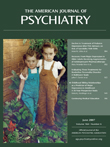Our assessment, operationalization, and understanding of child and adolescent psychopathology and of adaptive and maladaptive functioning have been developing very slowly. As the authors of this volume point out, “over the past few decades, efforts have become more systematic to identify and help children whose behavioral and emotional problems impair their functioning” (p. 1). This has been happening mostly in the more economically developed Western culture(s). Nevertheless, a full understanding of child/adolescent behavioral and emotional problems and psychopathology in the era of globalization should include an understanding of child and adolescent psychopathology from all kinds of cultures. This effort requires multicultural research on children"s problems. In their book, Thomas Achenbach and Leslie Rescorla, well known and well published child psychology and psychopathology researchers, make a strong case for conducting multicultural research of child and adolescent psychopathology, summarize for us what has been done so far, and what instruments have been and could be used in this type of research.
The authors discuss the reasons for multicultural research on children"s problems first. They warn us about the cultural dichotomies that interfere with our understanding of the increasing interconnections between cultures, such as “the West versus the rest” dichotomy or the “individualism versus collectivism dichotomy.” They also discuss the various viewpoints on multicultural research, such as the emic (from inside a particular cultural system) and etic (via standardized methods that are applicable to multiple cultures). The next two chapters present details of the empirically-based ("bottom up") and diagnostically-based ("top down") approaches to psychopathology.
The following three chapters present multicultural research on empirically-based scale scores, correlates of scale scores, and patterns of problems. In another two chapters, the text continues with the discussion of the multicultural findings on the prevalence of diagnostically-based disorders and on the correlates and comorbidity of diagnostically-based disorders. The subsequent comparison of these two approaches points out the much lower test-retest reliability of diagnoses than of empirically-based scales. The final two chapters review the methodological and conceptual challenges posed by multicultural research on children"s problems and the contribution of multicultural research to understanding, assessing, preventing, and treating child psychopathology. The authors propose that “multicultural findings on relations between risk factors and psychopathology suggest targets for prevention that are relevant to many cultural contexts” (p. 282).
This is an interesting, thought provoking, well referenced, complex, and complicated book. It synthesizes and integrates an enormous amount of information on multicultural assessment of child and adolescent psychopathology, material from hundreds of studies using various well known and lesser known scales and questionnaires. It proposes new ways to understand child psychopathology. Those interested in child and adolescent psychopathology and developmental psychology research will definitely find it interesting and useful. However, this is, in a way, a very "technical" and specialized volume, which may not necessarily appeal to the general readership.

